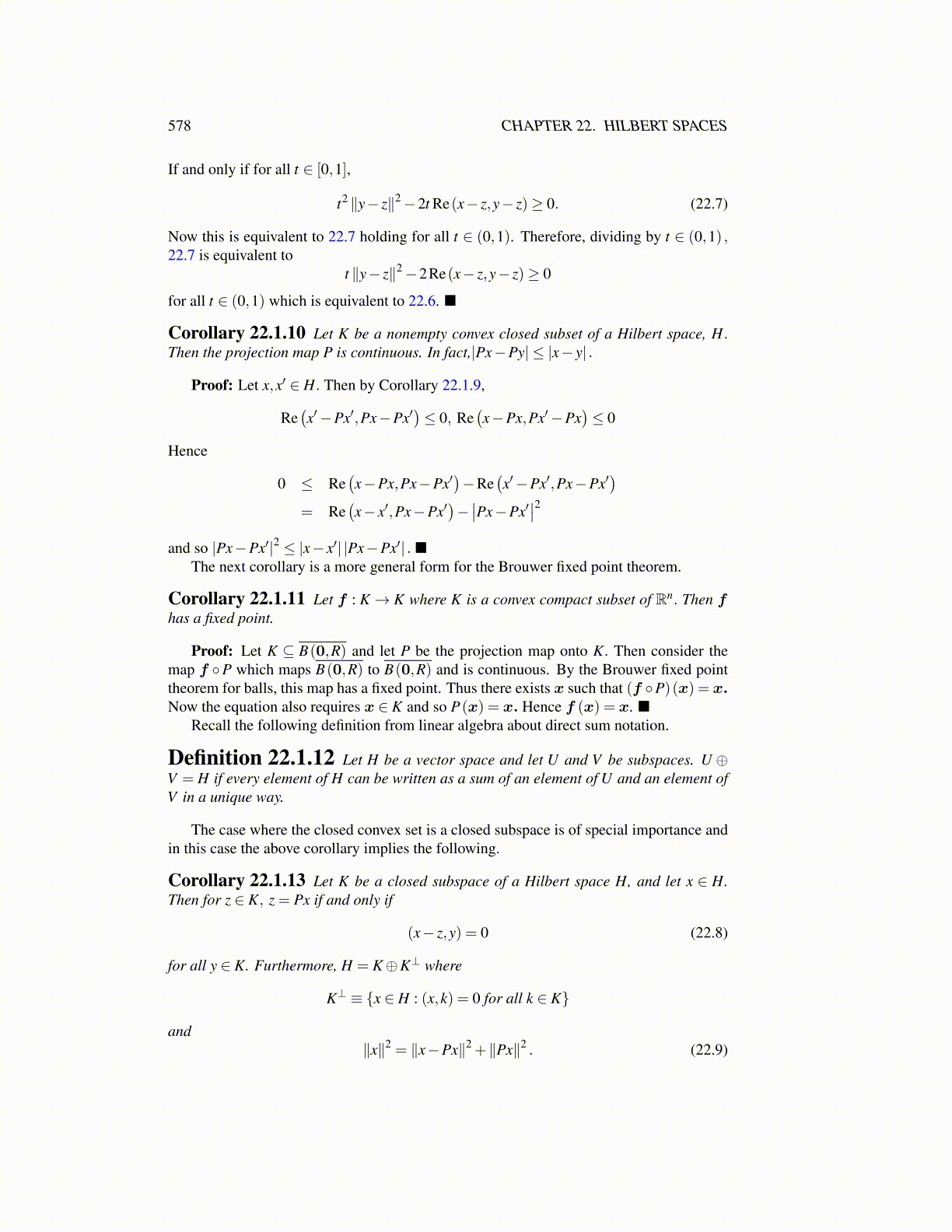
578 CHAPTER 22. HILBERT SPACES
If and only if for all t ∈ [0,1],
t2 ∥y− z∥2−2t Re(x− z,y− z)≥ 0. (22.7)
Now this is equivalent to 22.7 holding for all t ∈ (0,1). Therefore, dividing by t ∈ (0,1) ,22.7 is equivalent to
t ∥y− z∥2−2Re(x− z,y− z)≥ 0
for all t ∈ (0,1) which is equivalent to 22.6. ■
Corollary 22.1.10 Let K be a nonempty convex closed subset of a Hilbert space, H.Then the projection map P is continuous. In fact,|Px−Py| ≤ |x− y| .
Proof: Let x,x′ ∈ H. Then by Corollary 22.1.9,
Re(x′−Px′,Px−Px′
)≤ 0, Re
(x−Px,Px′−Px
)≤ 0
Hence
0 ≤ Re(x−Px,Px−Px′
)−Re
(x′−Px′,Px−Px′
)= Re
(x− x′,Px−Px′
)−∣∣Px−Px′
∣∣2and so |Px−Px′|2 ≤ |x− x′| |Px−Px′| . ■
The next corollary is a more general form for the Brouwer fixed point theorem.
Corollary 22.1.11 Let f : K→ K where K is a convex compact subset of Rn. Then fhas a fixed point.
Proof: Let K ⊆ B(0,R) and let P be the projection map onto K. Then consider themap f ◦P which maps B(0,R) to B(0,R) and is continuous. By the Brouwer fixed pointtheorem for balls, this map has a fixed point. Thus there exists x such that (f ◦P)(x) = x.Now the equation also requires x ∈ K and so P(x) = x. Hence f (x) = x. ■
Recall the following definition from linear algebra about direct sum notation.
Definition 22.1.12 Let H be a vector space and let U and V be subspaces. U ⊕V = H if every element of H can be written as a sum of an element of U and an element ofV in a unique way.
The case where the closed convex set is a closed subspace is of special importance andin this case the above corollary implies the following.
Corollary 22.1.13 Let K be a closed subspace of a Hilbert space H, and let x ∈ H.Then for z ∈ K, z = Px if and only if
(x− z,y) = 0 (22.8)
for all y ∈ K. Furthermore, H = K⊕K⊥ where
K⊥ ≡ {x ∈ H : (x,k) = 0 for all k ∈ K}
and∥x∥2 = ∥x−Px∥2 +∥Px∥2 . (22.9)